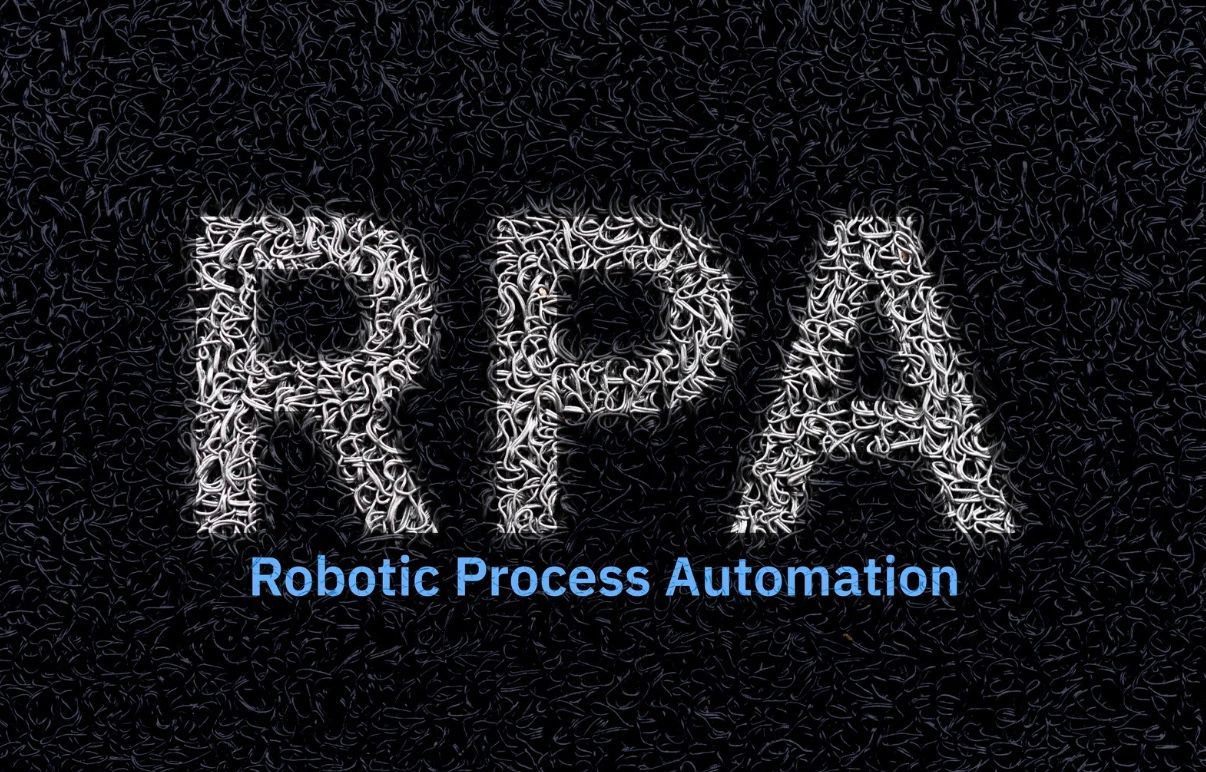Why RPA Matters: Benefits for Modern Enterprises
Why RPA Matters: Benefits for Modern Enterprises

Key Highlights
Here are the key takeaways about why Robotic Process Automation (RPA) is a game-changer for businesses:
● RPA uses software bots to handle repetitive digital tasks, boosting operational efficiency.
● This technology is a core part of business process automation, leading to significant cost savings.
● Implementing RPA helps reduce human error, which increases accuracy and compliance.
● It serves as a key enabler for digital transformation, freeing employees for more strategic work.
● There are many use cases across industries like finance, healthcare, and manufacturing.
Introduction
In today's fast-paced business world, are you looking for ways to improve efficiency and stay competitive? Robotic Process Automation (RPA) has emerged as a powerful tool to help companies achieve these goals. As a key driver of digital transformation, RPA streamlines your business process by automating tedious, rule-based tasks. This allows your team to focus on what truly matters: innovation, strategic thinking, and driving growth. Let’s explore how RPA can revolutionize your operations.
How RPA is Revolutionizing Workflow in Organizations
Understanding Robotic Process Automation (RPA) in Modern Enterprises
Robotic Process Automation is a software technology designed to make business automation simple and effective. It uses "bots" to mimic human actions and automate digital tasks, improving the speed and accuracy of your business operations.
This automation technology is particularly known for its reliability in handling high-volume, repetitive work. By integrating with your existing applications, RPA becomes a vital part of your enterprise automation strategy. Let's look closer at what RPA is, how it's different from other tools, and its core components.
Defining RPA and Its Role in Business Automation
So, what exactly is Robotic Process Automation? Think of it as a method of business process automation that employs software robots, or "bots," to handle digital business tasks that humans typically perform. These tasks include data extraction, filling out forms, copy-pasting information, and making calculations.
The primary role of RPA is to provide reliable automation solutions for these high-volume activities. It works through user interfaces and APIs, allowing it to connect and execute processes across different applications, including older legacy systems. This makes RPA a versatile tool for streamlining workflows.
It's important to understand that RPA on its own is purely process-driven and follows predefined rules. However, it often works alongside AI to expand its capabilities, tackling more complex use cases and accelerating your automation journey.
How RPA Differs From Traditional Automation Tools
A defining feature of RPA that sets it apart from traditional automation tools is its simplicity. You don't need advanced software development or coding skills to configure RPA-driven workflows. If you can record a video on your phone, you can set up an automation with RPA, making it highly accessible.
Unlike many traditional automation tools that may require deep system integration or complex coding, RPA works on top of existing applications. It interacts with the user interface just like a person would, which means you don't need to change your underlying systems. This dramatically reduces implementation time and cost.
This approach minimizes the need for human intervention in repetitive tasks and allows for a more flexible automation strategy. You can deploy bots to handle specific tasks without overhauling your entire IT infrastructure, making process automation quicker and more agile.
Core Components of an RPA System
An RPA system is built from several key components working together to automate your processes. At the heart of the system are the RPA bots, which are the software robots that carry out the automated tasks. These bots are designed to interact with applications through the user interface, just like a human employee.
To manage and deploy these bots, you need an automation platform. This central console allows you to configure, monitor, and scale your automations. It's the control center for your entire digital workforce, ensuring everything runs smoothly and securely.
The technology that powers these bots to "see" and interact with screens includes capabilities like computer vision. Core components of an RPA system typically include:
● RPA Bots: The software robot workforce that executes tasks.
● A Control Dashboard: An automation platform for managing bots and workflows.
● A Development Studio: A tool to design and build automation processes.
● Bot Runners: Machines that execute the automated tasks.
How Robotic Process Automation Works
Have you ever wondered how RPA bots actually perform their work? The process is quite straightforward. RPA bots are configured to follow a specific set of rules to complete tasks within your digital systems. They interact with applications and websites through the user interface, essentially mimicking the clicks and keystrokes of a human user.
This approach allows for seamless process automation without needing to alter your existing IT infrastructure. Whether it's extracting data or filling in forms, the bots perform these actions with speed and precision. Let's look at the technology behind them, the workflow process, and how they integrate with enterprise systems.
The Technology Behind RPA Bots
The technology powering RPA bots is designed to replicate human actions on a computer. At its core, RPA is a rule-based automation technology that follows a predefined script to interact with software applications. These bots navigate systems, identify on-screen elements, and perform actions like clicking buttons or entering text.
To make them even smarter, RPA is often combined with other technologies to create intelligent automation. By incorporating machine learning, natural language processing, and computer vision, RPA bots can handle more complex scenarios. For example, computer vision allows a bot to "see" and interpret images and text on a screen, even if the layout changes.
This infusion of AI has revolutionized what RPA can do. It has enabled features like resilient, self-healing automations that can recover from changes in underlying applications, significantly reducing execution failures and maintenance needs.
Process Flow: From Manual Tasks to Automated Workflows
Transforming manual tasks into automated workflows follows a clear and structured process. The journey begins with identifying the right processes for automation. These are typically manual tasks that are repetitive, rule-based, and high-volume. Tools like process mining can help discover and map these processes accurately.
Once a task is selected, the next step is to design the automated workflow. This involves documenting every step of the process just as a human would perform it. This blueprint is then used to configure the RPA bot to execute the same steps, turning repetitive work into a streamlined, automated process.
The typical process flow includes:
● Discovery: Identifying and analyzing tasks suitable for automation.
● Design: Creating a detailed map of the automated workflow.
● Development: Building the bot to follow the designed steps.
● Testing: Ensuring the bot works correctly and accurately.
● Deployment & Management: Launching the bot and monitoring its performance.
Integration of RPA With Existing Enterprise Systems
One of the biggest advantages of RPA is its ability to integrate seamlessly with your existing enterprise systems. RPA tools are application-agnostic, meaning they can work across different software without requiring any changes to the underlying technology. This includes modern digital systems as well as older legacy systems.
How does it achieve this? RPA operates at the presentation layer, or the user interface, just like a human. It reads screens, clicks buttons, and enters data into fields, regardless of the application running in the background. This non-invasive approach avoids the cost and complexity of traditional IT integration projects.
This capability makes RPA an incredibly flexible solution for improving business operations. You can automate processes that span multiple applications—like moving data from a spreadsheet to a CRM and then to an ERP system—without the need for expensive and time-consuming custom integrations.
Key Benefits of RPA for Organizations
Adopting RPA brings a wave of positive changes to any organization. The key benefits of RPA are immediately measurable, starting with significant cost savings and a boost in operational efficiency. By automating rule-based tasks, you can dramatically reduce the chances of human error.
This move toward intelligent process automation doesn't just improve your bottom line; it also frees up your employees to focus on more valuable and strategic work. Let's examine how RPA delivers increased efficiency, enhanced accuracy, and a strong return on investment.
Increased Efficiency and Productivity
RPA automation solutions introduce a new level of efficiency and productivity to your operations. Software robots work exceptionally fast and can operate 24/7 without breaks. A task that might take a human employee hours can often be completed in just minutes by a bot, drastically cutting down processing time.
This speed doesn't come at the cost of quality. By taking over repetitive tasks, RPA allows your human workers to dedicate their time and talent to more complex, creative, and strategic activities. This shift not only boosts overall productivity but also improves employee satisfaction by removing monotonous work from their plates.
RPA improves operational efficiency by:
● Operating around the clock to clear backlogs.
● Executing tasks faster than human workers.
● Handling high volumes of work without performance dips.
● Freeing up employees for higher-value activities.
● Streamlining complex, multi-system processes.
Enhanced Accuracy and Reduced Errors
Everyone makes mistakes, especially when performing monotonous tasks like data entry for hours on end. The risk of human error is a constant challenge in many business processes. This is where RPA bots provide a significant advantage, as they perform tasks with perfect accuracy every time.
As long as RPA bots are given the correct instructions, they will follow them flawlessly. This leads to uniform, predictable, and error-free results. For any business process automation initiative, eliminating errors is crucial for maintaining data quality, ensuring compliance, and delivering reliable outcomes.
This enhanced accuracy has a ripple effect across the organization. It reduces the time and resources spent on correcting mistakes, improves customer trust, and ensures that decisions are based on high-quality data. By minimizing human error, RPA strengthens the integrity of your entire operation.
Cost Savings and ROI Impact
Implementing RPA delivers a powerful impact on your bottom line. Software robots are more productive and less expensive than the equivalent human workforce required to perform the same tasks. This direct reduction in operational costs contributes to significant business cost savings and a quick return on investment (ROI).
An RPA implementation automates a business process, allowing it to be completed faster and more accurately. This efficiency gain translates directly into financial benefits. By reducing processing times and eliminating errors, you save money on labor and rework, freeing up capital for other strategic initiatives.
The financial ROI of an RPA project is often realized quickly. Consider the comparison below for a typical data processing task:
| Metric | Manual Process | Automated Process with RPA |
|---|---|---|
| Time to Process 100 Records | 4 hours | 15 minutes |
| Error Rate | 3-5% | 0% |
| Cost Per Record | $2.50 | $0.20 |
| Availability | 8 hours/day | 24 hours/day |
Common Use Cases and Applications of RPA
RPA excels at executing a wide range of manual and repetitive tasks, making its use cases vast and varied. From automating data entry and report generation to enhancing customer service responses, RPA software can be adapted to fit countless business needs.
This flexibility has made RPA a game-changer in nearly every industry, delivering dramatic time and cost savings. Let's explore some of the most common applications in departments like finance, human resources, and customer support.
RPA in Finance and Accounting
The finance and accounting departments are prime candidates for RPA due to their reliance on rule-based, data-heavy processes. In financial services, automation solutions can handle tasks with the accuracy and security required for compliance. This helps reduce manual effort and minimize the risk of errors.
For example, RPA can streamline invoice processing by automatically extracting data from invoices, validating it against purchase orders, and entering it into the accounting system. This speeds up payment cycles and improves vendor relationships. Similarly, RPA is excellent for automating report generation, consolidating data from multiple sources to create financial statements or compliance reports.
Common RPA applications in finance include:
● Accounts payable and receivable processing
● Automated invoice processing
● Bank statement reconciliation
● Financial report generation
● Customer onboarding and data verification
● Loan application processing
RPA in Human Resources and Payroll
Human resources departments handle a significant amount of administrative work, much of which is repetitive and ideal for automation. RPA bots can manage many of the data entry and processing tasks that consume a large portion of an HR professional's time, allowing them to focus on employee engagement and strategic initiatives.
A classic example is employee onboarding. RPA can automate the creation of new user accounts, grant access to systems, and manage payroll setup, ensuring a smooth and efficient experience for new hires. In payroll, bots can validate timesheets, process batch imports, and reconcile benefits invoices, reducing errors and ensuring timely payments.
By automating these essential but time-consuming aspects of the business process, RPA helps the human resources team become more strategic.
It frees them from administrative burdens and empowers them to add more value to the organization.
RPA Applications in Customer Service
In customer service, speed and accuracy are everything. RPA automation solutions can significantly enhance the customer experience by streamlining support processes. By working alongside your agents, RPA helps provide quicker response times and more consistent service, leading to higher customer satisfaction.
A common use case is automating responses to routine inquiries. Chatbots powered by RPA can handle simple requests like order status updates or account balance inquiries in real-time, 24/7. For more complex issues, RPA can automatically log customer complaints, categorize them, and route them to the appropriate support team, reducing resolution times.
RPA also improves the customer onboarding process by automating data entry and verification, ensuring a fast and smooth start. By handling these back-end tasks, RPA gives your customer support agents more time to manage complex issues and provide the excellent, personal responses that build loyalty.
Industries Most Impacted by RPA Technology
RPA technology is making a significant impact across a wide range of sectors. Industries that are heavily regulated or deal with high volumes of data have been particularly quick to adopt it as part of their digital transformation. These include financial services, healthcare, and manufacturing.
In each of these industries, RPA helps streamline operations, ensure compliance, and reduce costs. The technology's ability to handle repetitive, rule-based tasks with precision is a perfect match for their process-driven environments. Let's look at how RPA is being applied in these key sectors.
Financial Services and Banking
The financial services and banking industries are ideal environments for RPA. These sectors are characterized by high-volume, rule-based processes and strict regulatory requirements. RPA helps organizations meet these demands with greater accuracy, security, and efficiency.
For example, business process automation is used extensively for compliance and regulatory reporting. RPA projects can be designed to automatically gather and process data from various systems, reducing the chance of human error and ensuring that all requirements are met. This is crucial for avoiding penalties and maintaining a strong reputation.
From customer onboarding and loan processing to fraud detection and reconciliations, RPA is transforming operations throughout the banking sector. It streamlines back-office tasks, cuts processing times, and improves the overall customer experience, giving financial institutions a competitive edge.
Healthcare and Life Sciences
In healthcare and life sciences, RPA automation solutions are injecting much-needed operational efficiency. By reducing the administrative burden on staff, RPA allows providers to focus more on personalized patient care and improving outcomes. The technology is particularly valuable for handling the vast amounts of data entry involved in healthcare.
RPA is used to streamline claims processing by automating the verification of patient information, claim submissions, and follow-ups. This shortens reimbursement cycles and reduces errors. Patient data management is another key area where RPA helps by extracting and inputting data from multiple sources to update electronic health records (EHRs).
RPA use cases in healthcare that help meet regulatory requirements include:
● Automating patient scheduling, reminders, and cancellations.
● Speeding up insurance claims processing and verification.
● Managing patient data across different systems.
● Ensuring compliance through automated data collection for reporting.
Manufacturing and Supply Chain
From the factory floor to the back office, RPA is helping the manufacturing and supply chain sectors reduce costs and improve productivity. By automating key processes, companies can speed up time-to-market and create more resilient operations. Process discovery tools often reveal numerous opportunities for automation in this industry.
A practical use case is inventory management. RPA can automate stock level monitoring, trigger reorder processes, and perform inventory reconciliation. This ensures optimal stock levels and reduces the risk of shortages or overstocking. Similarly, RPA automation solutions can handle order processing by managing purchase orders, invoices, and shipment tracking.
These applications improve both accuracy and fulfillment times. By automating repetitive tasks within the supply chain, manufacturers can achieve greater efficiency, streamline logistics, and maintain a competitive advantage in a fast-moving market.
Getting Started With RPA in Your Business
Ready to bring the benefits of RPA to your business? Starting an RPA implementation doesn't have to be complicated. The key is to begin with a clear automation strategy that aligns with your business needs. By identifying the right RPA projects, you can build momentum and demonstrate value quickly.
Creating a successful automation program involves careful planning, selecting the right tools, and engaging your team. Let's walk through the steps to launch your initiative and some best practices for choosing an RPA software provider.
Steps to Launch a Successful RPA Initiative
Launching a successful RPA implementation starts with a solid plan. The first step is to engage stakeholders from across the organization. Getting buy-in from leaders and involving your workforce from the beginning is crucial for smooth adoption and managing change.
Next, you need to identify which processes are the best candidates for automation. Use process discovery tools to analyze existing workflows and find repetitive, rule-based tasks that will yield the greatest ROI. Many organizations choose to start small with a pilot project to demonstrate quick wins and build confidence.
Follow these best practices for your RPA journey:
● Engage stakeholders early to build support.
● Establish a Center of Excellence (CoE) for governance and standards.
● Use process discovery to identify ideal automation opportunities.
● Select the right RPA tools that fit your business needs.
● Start with small, high-impact projects to show value.
● Measure performance with KPIs to optimize and scale.
Best Practices for Selecting RPA Software Providers
Choosing the right RPA software is critical to the success of your automation program. Your selection should align with your long-term business needs and automation goals. One of the most important factors is user-friendliness. Look for RPA solutions with low-code or no-code platforms that allow both technical and non-technical users to build automations.
Scalability and security are also top priorities. Ensure the provider’s platform can grow with you as your automation needs expand and that it adheres to strict security standards to protect your data. A transparent pricing model that avoids unexpected costs as you scale is another key consideration.
Finally, evaluate the provider's commitment to innovation and support. The RPA landscape is rapidly evolving, so choose a vendor with a proven track record that invests in AI-driven features. Robust customer support, comprehensive training, and an active user community are also best practices that will support a successful journey.
Conclusion
In summary, Robotic Process Automation (RPA) is reshaping how modern enterprises operate, offering unprecedented efficiency and accuracy. By automating repetitive tasks, businesses can redirect their focus towards strategic initiatives that drive growth. The benefits of RPA extend across various industries, from finance to healthcare, proving its versatility and effectiveness. As organizations begin their RPA journey, following best practices and understanding their unique needs will be essential for a successful implementation. Embracing RPA not only enhances productivity but also positions companies to thrive in an increasingly competitive landscape. If you're ready to explore how RPA can transform your business operations, don't hesitate to get in touch for a free consultation!
Frequently Asked Questions
What kinds of business tasks are best suited for RPA?
The best tasks for RPA are repetitive, rule-based digital tasks with low complexity. Think of high-volume activities like data entry, copy-pasting information, filling out forms, or generating standard reports. If a process is stable and follows clear instructions, it's a great candidate for process automation.
What are common challenges in implementing RPA?
Common challenges in RPA implementation include identifying the right processes to automate, managing change among human workers, and ensuring proper governance. Technical hurdles like integration with complex legacy systems and maintaining the bots as applications change can also pose difficulties if not planned for properly.
Who are the major RPA software providers in the United States?
The RPA market includes several major providers offering a range of automation solutions. Enterprise-level leaders like Automation Anywhere and UiPath are known for their comprehensive RPA platform capabilities. Other software tools come from ecosystem-based providers like Salesforce and specialty vendors, each catering to different business automation needs.



